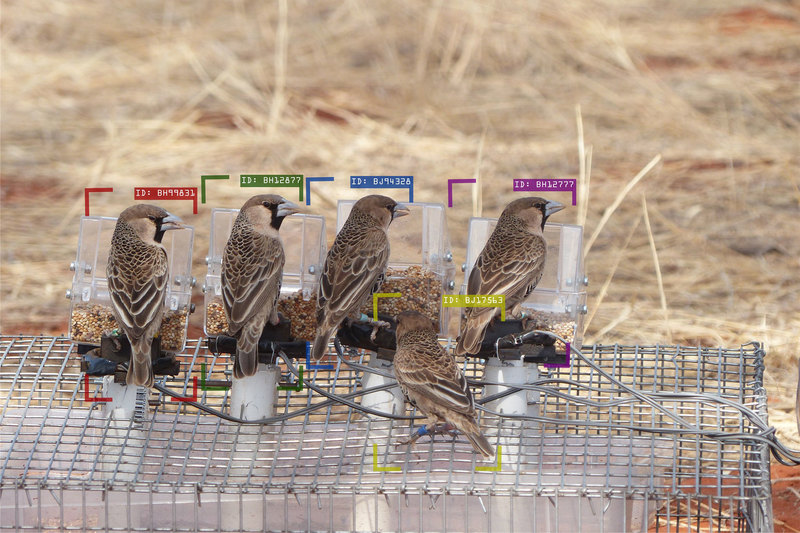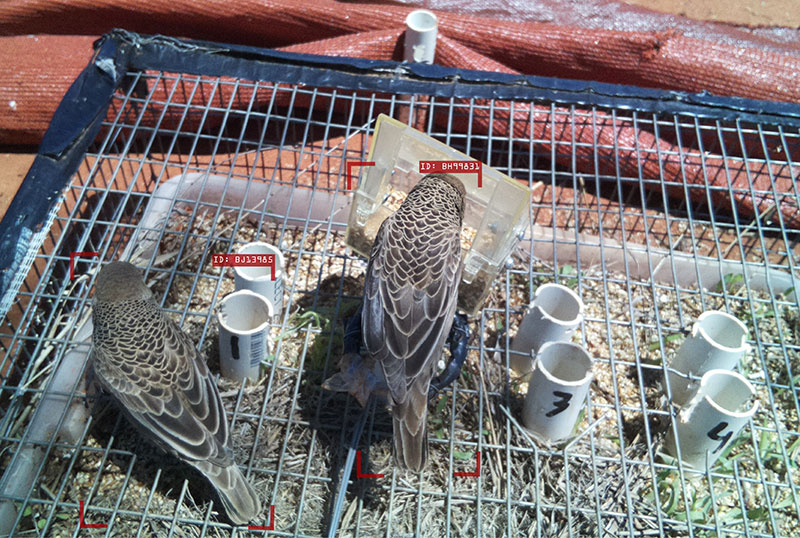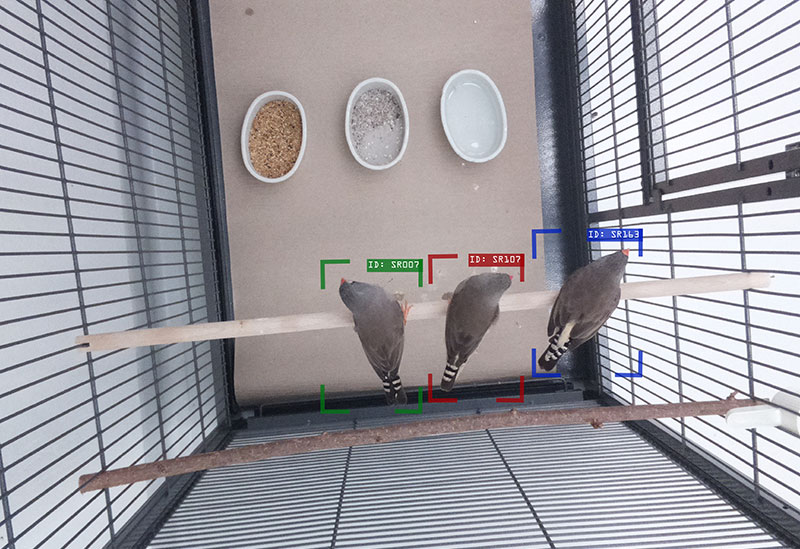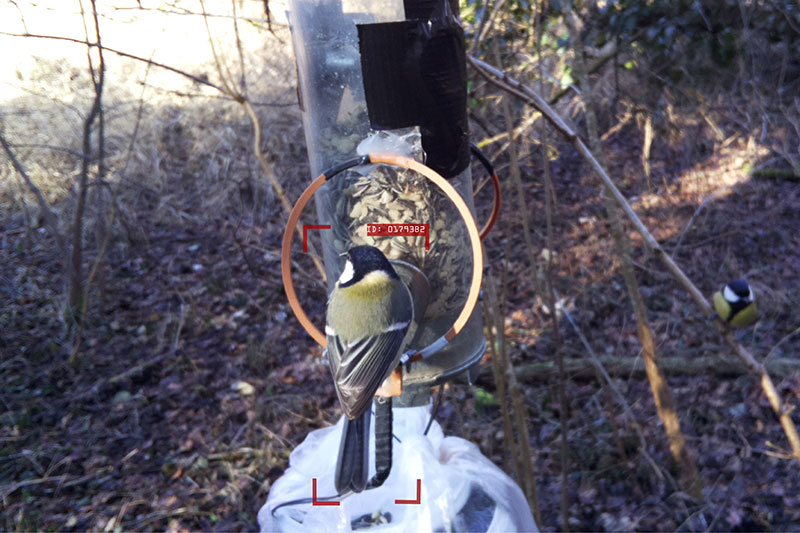AI trained to study individual birds in wild populations
07 August 2020 | Story Helen Swingler. Voice Lerato Molale. Read time 8 min.
Birds of a feather may flock together, but a lack of distinctive colour markings makes it hard to identify individuals. This limits the number of wild birds that can be studied in a given population, hampering conservation efforts, but a new artificial intelligence (AI) tool is changing that.
Using AI, biologists can now train computers to recognise individuals by their feather formations, even though they look identical to the human eye. This research, conducted by scholars from the University of Cape Town (UCT) in South Africa, the French National Centre for Scientific Research, the Research Centre in Biodiversity and Genetic Resources and other institutes from Portugal, and the Max Planck Society from Germany, has been published by the British Ecological Society’s Methods in Ecology and Evolution. It is the first successful attempt to do this in birds.
The group collected thousands of labelled images of great tits and sociable weavers in wild populations and in a captive population of zebra finches. These are some of the most studied birds in behavioural ecology. The images were used to train AI models to recognise images of the individual birds in wild populations. The AI models were tested with images of the individuals they had not seen before and had a 90% accuracy for the wild species and 87% for the captive zebra finches.
“We show that computers can consistently recognise dozens of individual birds.”
“We show that computers can consistently recognise dozens of individual birds,” said the lead author, André Ferreira, a PhD student at the Centre for Functional and Evolutionary Ecology in France.
UCT co-author Dr Rita Covas of the FitzPatrick Institute of African Ornithology added: “In our work we provide the complete pipeline to use AI for individual identification – from the initial step of collecting labelled pictures, to [training] and [testing] the deep learning models for individual identification.”

Answers to critical questions
Conservation biologists and ornithologists are upbeat about the development.
“Long-term studies of animal populations are important to answering critical questions in ecology, evolutionary biology, and conservation – especially conserving species in the face of climate change,” said Covas.
But monitoring individuals over their lifetimes and across generations is challenging, she said. This requires researchers to be able to distinguish among the different individuals in a population.
“In some species, such as giraffes and leopards, the distinct patterns of individuals’ coats allow for recognition, even by the human eye. But for most species, external visual marks such as colour bands are key to identification.”
This work also prepares the stage for the development of powerful AI models capable of individual identification of birds that are completely unmarked and unmanipulated by the researchers, opening the stage for a data revolution in field studies of wild birds.
Saving resources
The work contributes to the development of low-cost automated methods for data collection in animal studies. Individually identifying birds is the most expensive and time-consuming factor, limiting the scope of the behaviours and the size of the populations that researchers can study, the scholars said.
To date, individual identification of birds is mostly done by attaching colour bands to their legs, and data are collected by direct field observations or using video recordings with posterior manual examination of those recordings.
“Our work provides a solution that can automate individual identification of birds from videos and pictures.”
“These methods are extremely time consuming, tedious and error-prone,” said Ferreira. “Our work provides a solution that can automate individual identification of birds from videos and pictures.”
An important benefit is that AI allows researchers to record behaviour with video, which provides access to a huge range of contexts that are otherwise not available using existing automated methods, such as passive integrated transponder (PIT) tags. The tags are commonly used to record the presence of individuals in specific locations, such as nest boxes and bird feeders. These tags are like the microchips implanted in pet cats and dogs.

For AI models to accurately identify individuals, they need to be trained with thousands of labelled images. Companies like Facebook can do this for human recognition because they have access to millions of pictures of different people that are voluntarily tagged by users; however, acquiring such labelled photographs of animals is difficult and has created a bottleneck in research.
The researchers were able to overcome this challenge by building feeders with camera traps and sensors. Most birds in the study populations carried a PIT tag. Antennae on the bird feeders were able to read the identity of the birds from these tags and trigger the cameras.
Deep learning
AI methods like the one shown in this study use a type of deep learning known as convolutional neural networks, which are optimal for solving image classification problems. In ecology, these methods have previously been used to identify animals at a species level and individual primates, pigs and elephants. However, until now it hasn’t been explored in smaller animals like birds outside the laboratory.
The authors caution that the AI model is only able to re-identify individuals it has been shown before.

“We have not shown yet that it is possible to build models that are able to detect and identify new birds that might join the study population,” said Covas. “We also do not know yet how the performance of those models varies over time, as the appearance of birds might change after moulting events, which might lead the models to wrongly consider pictures of the same bird taken months apart as being different individuals. Images of the same bird taken months apart could be mistakenly identified as different individuals.”
But, said the authors, these limitations can be overcome with large enough datasets – thousands of images of thousands of individuals over long periods of time.
This is where they are now focused.
 This work is licensed under a Creative Commons Attribution-NoDerivatives 4.0 International License.
This work is licensed under a Creative Commons Attribution-NoDerivatives 4.0 International License.
Please view the republishing articles page for more information.










